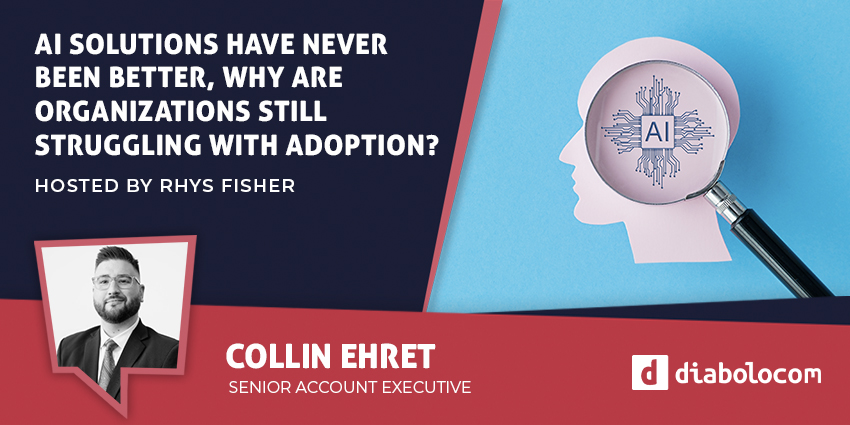2023 could be the year when AI pivots from a “nice to have” to a necessity for contact centers.
Indeed, many operations have reached the point of no return. Just consider the current environment, where contact centers are struggling to:
- Bring in enough new employees to meet demand
- Cut costs in preparation for the economic downturn
- Unpack data in complex technology environments
Fortunately, low-hanging fruit use cases are much more accessible than ever before. The lack of which had held many operations back from investing in AI transformation.
Yet, by considering the following five examples, contact centers can envision just how practical AI implementation is becoming.
Indeed, each offers businesses a secret weapon as they navigate what promises to be an unpredictable 2023.
1. Voice Assistants
The IVR is the first point of contact for a customer. In a traditional IVR scenario, a customer follows multiple, cumbersome steps: press one for service, two for support, three for sales, and more.
AI has changed all that.
“In a traditional static IVRs, a customer must endure answering a series of questions like providing their name and account number, and then working through various nested IVR menus to get to an agent,” said Alain Mowad, Director of Product Marketing at Talkdesk.” It’s complicated, it’s annoying, and it often causes many customers to hang up.”
Today, AI-powered voice assistants provide a seamless experience. No more nested menus. The customer reaches an agent in seconds, as the bot understands the customer’s intent from just a few spoken words.
Also, thanks to voice assistants, customers can self-serve over the phone, helping to remove many of the simple, transactional contacts from call queues.
2. Chat Automation
Alongside automating voice interactions, chatbots enable contact centers to mechanize contact center interactions across digital channels.
Such use cases are picking up steam, with Gartner finding that, by 2026, conversational AI will automate six times more agent interactions than it does today.
Of course, there is still complexity associated with deployment. Nevertheless, increasing AI sophistication and low-code innovation have significantly simplified the process.
Moreover, vendors like Talkdesk support their clients by helping them implement bots that collect customer information as they wait to be served. They then pass this on to agents at the start of the call, streamlining the subsequent conversation.
As a result, businesses can completely automate many contacts and support agents with additional information as they combat more complex queries.
3. Agent Assistance
When customers transfer to an agent, they expect an effortless experience. The faster the resolution, the better the customer and the agent experience.
AI agent assistance plays an increasingly important role in this scenario.
Indeed, the technology surfaces information relevant to the customer-agent conversation in real-time, scouring internal systems, including the knowledge base, CRM, and other databases.
In addition, some even recommend the next-best actions to simplify the agent experience further and increase contact center efficiency.
Accenture research underlines the potential of this use case. It estimates that AI-powered agent assistance will boost productivity by 25 percent in the U.S. by 2040.
4. Quality Management
PWC reports that 59 percent of customers will walk away after several bad experiences; 17 percent will do so after just one bad experience.
Those are eye-popping statistics.
Unfortunately, a company with limited staff can only partially address quality management, meaning it monitors a minute percentage of calls and misses many critical performance trends.
Yet, with AI, contact centers can track 100 percent of their interactions, automatically scoring them while surfacing improvement opportunities and examples of excellent performance.
The latter allows supervisors to spot agents doing great things, reward them, and motivate them to repeat those fantastic behaviors.
5. Human-in-the-Loop AI Training
AI learning systems often require extensive training to automate many customer contacts and spotlight contact center best practices.
As a result, many contact centers are wary of the additional costs of AI, fearing that they will have to hire data scientists to develop their AI.
However, Talkdesk has created models that allow non-technical staff to operationalize AI. As Mowad tells us:
“We’ve created a straightforward interface to allow agents and supervisors to continuously train the AI models in situations where the AI engine may flag certain phrases with a lower confidence score. It negates the need for specialized resources, which can be expensive and difficult to come by, while empowering the CX experts who have domain expertise to actively train the AI models.” – BLOCK
As a result, there is no need for data scientists, and contact centers can more easily fine-tune the accuracy and predictive power of AI.
2023 Is Upon Us. Will AI Measure Up?
The history of AI is full of false starts. Many contact centers invested heavily in AI, only to discover that it didn’t match the hype.
But today, thanks in part to these five use cases, there is more confidence in AI and an acceleration in adoption.
The Harvard Business Review published an informative article about how to implement AI in organizations. Hint: take small steps. Forget moon shots. To read it, click here.







